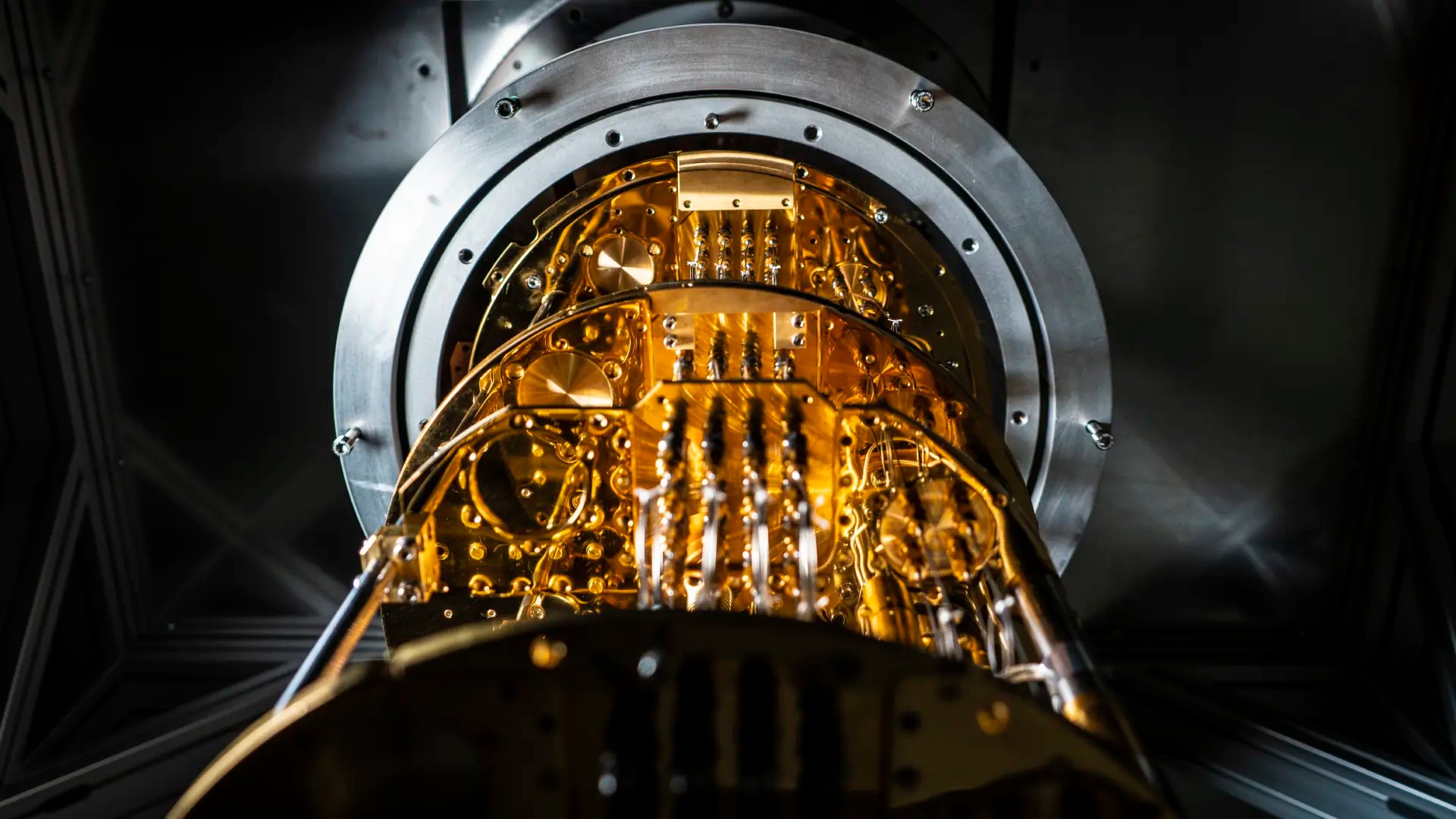Chalmers is building a quantum computer, and you can contribute to this development!
Quantum computers are machines first envisioned by Richard Feynman to solve numerical and simulation problems that would take millennia even with the fastest supercomputers. Building a quantum computer is an interdisciplinary effort that requires competence in disciplines such as hardware design, nanofabrication, microwave engineering, algorithm development and numerical simulations. We call this the full stack quantum computation, which connects the special quantum hardware enclosed at very low temperatures close to the absolute zero point all the way to the user interface. In this course, students learn about this emerging field by getting involved at the forefront of research.

General information
The course consists of lectures and a project. The main part is a challenge-driven project executed by teams of 2-4 students. The students are given the unique opportunity to design a project centered around any layer of the quantum computing stack, or at the interface between layers. We are able to offer such projects thanks to the Wallenberg Centre for Quantum Technology, whose core project is to build a full-stack quantum computer based on superconducting circuits.
The course starts with 7 lectures on the fundamentals of quantum mechanics, quantum software, and quantum hardware. Next, the students draft and receive feedback on their project proposals. The challenge-driven projects run for the rest of the semester under the supervision of academic personnel at Chalmers. At the end of the semester, the teams present their results, and hand in a written report.
After the course, the students should be able to:
• describe and apply the quantum mechanical principles of two-level systems (quantum bits);
• apply the mathematical formalism of quantum mechanics;
• apply the gate model of quantum computation;
• analyze and explain various quantum hardware and quantum bit architectures;
• design and implement project-specific quantum software or hardware (for example: superconducting quantum circuits, cryogenic packaging, room-temperature control electronics, measurement & control scripts)
Prerequisites
Linear algebra and classical electrodynamics are required. Depending on the project of choice, solid state physics, computer algorithms or electronic circuit design may be helpful, but not compulsory.
How to apply
Apply to all Tracks courses at universityadmissions.se/antagning.se.
At universityadmissions.se/antagning.se: Search for the course you are interested in by using the course code starting with TRA.
Read more here.
Please add a short motivation letter where you tell us about your background and the type of project you are interested in, to the application.
Details
Teacher (s): Simone Gasparinetti. Guest lecturers from the Wallenberg Centre for Quantum Technology.
Course dates: Study period 1-2, 2025
Credits: 7.5
Level: Advanced
Course code: TRA200
Application deadline: Aug 19 - Sep 5, 2025